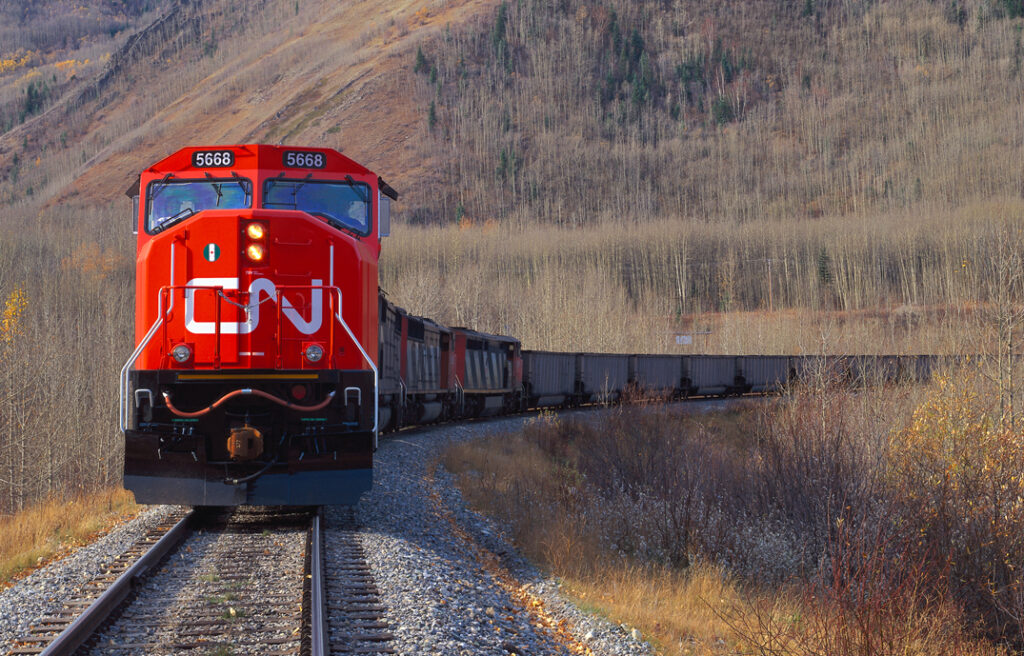All about the community of model railroading and rail enthusiasm
August 24, 2024 / Updated August 28, 2024
UPDATE: Aug. 28, 2024
The Canada Industrial Relations Board ordered binding arbitration between Canadian Pacific Kansas City and Canadian National Railway and Teamsters Canada Rail Conference Aug. 24, sending all parties back to work. TCRC removed picket lines at Canadian Pacific Kansas City and did not strike at Canadian National Railway as planned on Aug. 26. Service on both railroads resumed the same day.
The Canadian government ordered Canadian National and Canadian Pacific Kansas City back to work within hours of both railroads locking out Teamsters Canada Rail Conference employees in a labor dispute.
Prime Minister Justin Trudeau ended the lockout Thursday and ordered the parties into binding arbitration with the Canada Industrial Relations Board.
TCRC challenged the constitutionality of the order and a hearing on Friday with the CIRB yielded no final decision.

CN employees represented by TCRC went back to work on Friday as the railroad began ramping up operations. CPKC remained idle as workers continued a strike that began the day before.
Since then, TCRC has served notice to CN of a planned strike beginning Monday, Aug. 26.
“The TCRC will await the board’s decision,” the union said in a letter to employees. “If unsuccessful the TCRC will lawfully abide by the decision, but will undertake steps to challenge to the fullest extent.”
The letter went on to say that the union is prepared to appeal to a federal court.
Earlier this week CN and CPKC began shutting down their networks after notifying TCRC-represented locomotive engineers, conductors and dispatchers of the lockout.
The railroads began the lockout at 12:01 a.m. Aug. 22. Later in the day, the Canadian government ordered the railroads back to work.
“The Canadian government has recognized the immense consequences of a railway work stoppage for the Canadian economy, North American supply chains and all Canadians,” CPKC president and CEO Keith Creel said. “The government has acted to protect Canada’s national interest. We regret that the government had to intervene because we fundamentally believe in and respect collective bargaining; however, given the stakes for all involved, this situation required action.”
At issue since the contract expired late last year are improved safety, wages and work/life balance.
In June, TCRC voted to authorize strikes at CPKC and CN. The union represents about 6,000 CN workers and 3,300 CPKC workers. It also represents CPKC’s rail traffic controllers.
CN and CPKC are the largest railroads on the Canadian freight rail network. Canadian railways transported half of the country’s exports in 2022 and more than $380 billion worth of goods, according to the latest data from the Railway Association of Canada.
The work stoppage, if sustained, could deal a blow to the U.S. economy on the cusp of a fall shipping season that has high hopes for a strong Canadian grain market after two years of drought.
About 75 percent of all Canadian exports to the U.S. go by rail. About 50 percent of the grain train between the countries is transported by rail cars, according to the American Farm Bureau Association.
The Canadian government forecasts the 2024-25 grain season, which began Aug. 1, to improve over last year, based on current favorable growing conditions across the country as a result of rain and slightly cooler than normal temperatures. The forecast is for 94.4 million metric tons for production and 106.9 metric tons for supplies, assuming trend yields.
The Grain Growers of Canada, which represents over 65,000 producers, estimates that the strike will cost grain farmers over $43 million a day in the first week alone, with losses expected to escalate to $50 million a day the week after and beyond if the stoppages continue.
“The total shutdown of Canada’s two national railways is an unprecedented crisis for the grain industry,” said Kyle Larkin, GGC executive director. “With work stoppages at both CN and CPKC, our entire supply chain is at risk. This disruption is happening at the worst possible moment, during the start of harvest season, when our farmers are most dependent on our rail network.”
Canada’s crops account for $35 billion in exports, according to GGC.
Container xChange, an online marketplace for container trading and leasing based in Hamburg, Germany, says the work stoppage likely will create severe operational challenges for the container logistics industry, leading to increased costs for shippers and cargo owners, delays and diversions.
“Given our ongoing forecasts of elevated inventories, we anticipated a potential decline in freight rates in the near term,” Container xChange cofounder Christian Roeloffs said. “However, with the looming strikes at Canadian railways and U.S. ports, we may see an immediate uptick in freight rates as market participants brace for significant disruptions. This is a common reaction to potential disruptions, as uncertainty drives up costs.”